How is Ski Jumping Scored? (Not Distance!)
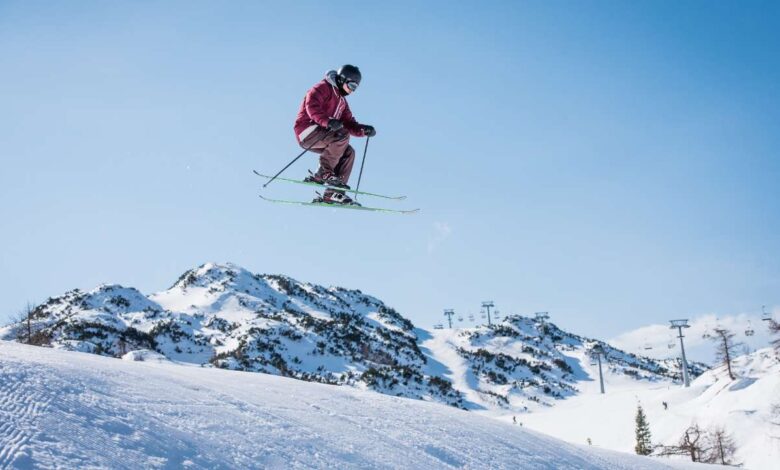
When we watch ski jumping, it’s easy to assume that the jumper who flies the farthest wins. However, ski jumping is scored based on more than just distance. The scoring system is complex and takes into account style, wind, and gate factors. While distance is an important part of the score, it’s not the deciding factor in victory. In this article, we’ll explore how ski jumping is scored and why technique and consistency matter just as much as distance.
Contents
- 0.1 Ski Jumping Scored: Beyond Distance
- 0.2 The Importance of Style Points
- 0.3 Wind and Gate Adjustments: Key Factors
- 0.4 Distance Points: Breaking It Down
- 0.5 Calculating the Final Score
- 0.6 Why Distance Isn’t Everything
- 1 Improved Technology and Athleticism Transformed the Sport
- 2 Scoring in Ski Jumping
- 3 What Other Factors Come Into Ski Jump Scoring?
Ski Jumping Scored: Beyond Distance
In competitive ski jumping, 60% of the score typically comes from distance, while 40% comes from style and other factors. Distance points are calculated based on the length of the jump, but style points awarded by five judges are equally critical. Judges score jumpers on their body position, flight posture, and landing technique. Each judge can award up to 20 points, with the highest and lowest scores dropped, leaving the middle three scores to determine the style score. To get in touch with Ski Jumping World Cup 2024 regularly visit the new ski website.
The Importance of Style Points
Judges are looking for perfect control and technique. A good jump involves a smooth takeoff, maintaining balance and stability in the air, and performing a “Telemark” landing—where one ski is slightly ahead of the other. Any wobble or loss of control in flight results in deductions. For example, a Telemark landing is worth up to 5 extra points per judge, but missing this landing style or stumbling on the landing can cost the athlete significant points. The highest possible style score is 60 points, but even the smallest error can mean a substantial loss in points.
Wind and Gate Adjustments: Key Factors
Wind plays a huge role in ski jumping, and to keep things fair, the scoring system compensates for wind conditions. Athletes receive wind compensation points based on the speed and direction of the wind during their jump. If a jumper has a headwind (which helps them fly farther), points are deducted, while a tailwind (which hinders distance) adds extra points. A typical wind compensation adjustment can range from 10 to 20 points depending on the conditions.
Gate compensation also adjusts for changes in the starting position. If the gate—the starting point on the ramp—is lowered for safety reasons, jumpers are given extra points to make up for the reduced speed they get from starting lower. The adjustment typically adds 2 to 8 points depending on how much the gate is moved.
Distance Points: Breaking It Down
While style and wind compensation are important, distance still forms a significant part of the score. The starting point for distance scoring is the K-point or critical point, which is the distance a jumper must reach to avoid point deductions. For example, on a 120-meter hill (large hill), the K-point might be set at 120 meters. For every meter a jumper lands beyond the K-point, they gain 1.8 points on a large hill and 2 points on a normal hill. Falling short of the K-point results in points being deducted. For instance, if a jumper lands at 118 meters on a large hill, they will lose points based on the 1.8-point deduction per meter.
Calculating the Final Score
The final score in ski jumping is a combination of distance points, style points, and wind/gate adjustments. Let’s say a jumper lands at 125 meters on a large hill. They would receive (125-120) x 1.8 = 9 points for exceeding the K-point. If they receive 54 out of 60 possible style points, their combined score would be 9 + 54 = 63 points. Then, any wind or gate compensation (e.g., +5 points for a tailwind) is added to get the final score, which might be 68 points for that jump.
Why Distance Isn’t Everything
It’s clear that while distance plays a role, it doesn’t determine the overall winner in ski jumping. Athletes need to focus on more than just flying far—they need to deliver an elegant performance in the air and land with precision. The ability to manage challenging wind conditions and adjust to gate changes also makes a big difference in the final score. In the end, the most successful ski jumpers are those who can combine technique, control, and distance, while mastering the complexities of the sport’s scoring system.
Improved Technology and Athleticism Transformed the Sport
Over the years, improvements in the era have greatly converted various sports, and ski jumping is no exception. Modern devices, which include lighter skis crafted from advanced materials and aerodynamic suits, have allowed athletes to jump farther and with more precision. Ski bindings and boots at the moment are designed to offer better control and protection throughout takeoff and touchdown, decreasing the threat of harm. These enhancements not only beautify overall performance but also push athletes to gain greater heights.
In addition to the system, technological improvements have stepped forward schooling methods for ski jumpers. High-tech simulation machines permit athletes to practice their jumps in controlled environments, supporting them in their approach before hitting the slopes. Advanced video analysis tools are now used to have a look at body posture, flight role, and landing techniques, permitting jumpers to make particular changes to enhance their shape. These tools have revolutionized the manner ski jumpers put together for competitions, contributing to higher outcomes on the global stage.
Athleticism has also played a vital position in transforming the sport. Today’s ski jumpers are more physically matched than ever, incorporating power schooling, staying power sporting events, and flexibility workouts into their exercises. Athletes are now required to hold peak physical condition to maximize their performance at some stage in jumps. This mixture of enhanced athleticism and modern generation has raised the extent of opposition in ski leaping, making the game faster, greater aggressive, and interesting for athletes and fanatics alike.
Stages of Each Ski Jump
Ski jumping is a thrilling sport that involves multiple stages, each crucial for a successful jump. From the moment the jumper starts until they land, every step requires precision and skill. Understanding these stages helps explain the complexity of the sport and what it takes to achieve a perfect jump. Let’s break down each stage in simple terms.
1. The Inrun (Takeoff Preparation)
The first stage of a ski jump is called the inrun. This is when the skier sits at the top of the ramp and pushes off, gaining speed as they descend. The goal is to reach maximum velocity before takeoff. Skiers stay in a crouched position to reduce air resistance and increase their speed. The inrun is critical because the faster the skier goes, the more lift they will generate during takeoff. A smooth, balanced descent sets the foundation for the entire jump.
2. The Takeoff
Once the skier reaches the end of the inrun, they hit the takeoff point. This level is where the skier jumps off the ramp, launching themselves into the air. Timing is everything here—leaping too early or too overdue can reduce distance and height. Skiers push upward with their legs and expand their bodies to gain as good a deal of elevation as viable. A sturdy, nicely-timed takeoff lets the skier go into the air in a strong position, putting in for an excellent flight.
3. The Flight
The flight stage is where the skier soars through the air. During this section, the skier continues an aerodynamic position with palms prolonged backward and skis forming a “V” form. This helps reduce drag and allows the skier to journey as ways as possible. The skier’s ability to control their posture, balance, and body angle determines how smooth the flight may be. An appropriate flight isn’t always just about distance but also about maintaining balance for a controlled touchdown.
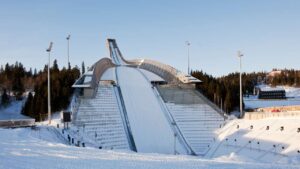
4. The Landing
The final stage is the landing, where the skier touches down on the slope. A proper landing involves a Telemark position, where one ski is slightly in front of the other, helping absorb the impact and maintain balance. Skiers are judged no longer simplest on how some distance they soar but additionally on how well they land. A shaky or unsteady touchdown can bring about point deductions, even after a long and managed flight.
Scoring in Ski Jumping
Scoring in Ski Jumping: An Easy Guide
Ski jumping is a sport where athletes are judged not just on how far they jump, but also on their technique and ability to handle different conditions. The scoring system in ski jumping is a mix of distance points, style points, and adjustments for wind and gate changes. Each jump is carefully evaluated to give a fair score to the athletes. Let’s take a look at how this scoring works!
Distance Points
The first and most obvious part of scoring is the distance the jumper covers. Each hill has a K-point (critical point) that acts as the reference. For example, on a 120-meter hill (large hill), the K-point is usually at 120 meters. If a jumper lands beyond the K-point, they earn additional points. On a large hill, every meter past the K-point is worth 1.8 points, while on a normal hill, each meter gives 2 points. However, landing short of the K-point leads to deductions.
| Hill Size | K-Point (Critical Point) | Points per Meter (Beyond K-Point) |
|---|---|---|
| Large Hill | 120 meters | 1.8 points |
| Normal Hill | 90 meters | 2 points |
Style Points
In addition to distance, jumpers are also scored on style. Five judges evaluate the athlete’s posture, flight control, and landing technique. Each judge can award up to 20 points, but the highest and lowest scores are discarded to avoid bias. This means only the middle three scores are counted, making a maximum of 60 points possible for style. A clean flight and a smooth Telemark landing—where one ski is placed slightly ahead of the other—are critical for high-style points.
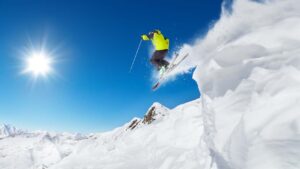
Wind Compensation
Wind plays a big role in ski jumping. If there is a headwind, the jumper can soar farther, while a tailwind makes it harder to cover distance. To keep things fair, judges add or subtract wind compensation points based on the wind’s speed and direction. Typically, wind adjustments range from +10 to -20 points, depending on how strong the wind is and whether it helps or hinders the jumper.
Gate Compensation
Sometimes, the starting gate (the point where the skier begins) is changed for safety reasons. If the gate is moved lower, the jumper loses speed, and judges compensate by adding extra points. Conversely, if the gate is moved higher, points may be deducted. Gate compensation is usually worth 2 to 8 points. This adjustment ensures that all athletes have an equal chance, regardless of gate changes.
The Final Score
The final score is a combination of distance points, style points, and any wind or gate adjustments. For instance, if a jumper lands at 125 meters on a large hill, they would earn (125-120) x 1.8 = 9 points for distance. If they receive 54 out of 60 possible style points, their score would be 9 + 54 = 63 points. Adding a wind adjustment of +5 points, the final score becomes 68 points for that jump.

Style Points
-
Takeoff (5 points)
-
Flight (5 points)
-
Landing (10 points)
Interesting Facts
-
The longest ski jump recorded was 253.5 meters by Stefan Kraft (Austria) in 2017.
-
Ski jumping has been an Olympic sport since 1924.
-
The highest score ever achieved in ski jumping was 305.2 points by Kamil Stoch (Poland) in 2018.
What Other Factors Come Into Ski Jump Scoring?
Ski jumping is more than just distance and style; other important factors influence how a jump is scored. These additional elements ensure fair competition and help account for changing conditions during the event. Let’s take a look at what else affects the final score in ski jumping.
Wind Conditions
Wind plays a big role in ski jumping, and it can either help or hinder the athlete. A headwind, which blows against the jumper, helps them fly farther, while a tailwind, which blows from behind, makes it harder to jump long distances. To keep the competition fair, judges apply wind compensation points. If the wind helps the jumper, points are deducted; if the wind makes it harder, points are added. Wind adjustments can vary between +10 to -20 points, depending on how much the wind impacts the jump.
Gate Adjustments
Another factor that comes into ski jump scoring is the starting gate. Athletes begin their jump from a set point on the ramp called the gate. If the gate is lowered (to make the jump safer in strong winds, for example), the jumper will lose speed, so extra points are added to compensate. If the gate is raised, allowing more speed, some points are deducted. These gate compensation points usually range between 2 to 8 points, depending on the change in starting position.
Landing and Ground Contact
The way a jumper lands also plays a role in their score. A perfect landing should be smooth and controlled, often with a Telemark position, where one ski is slightly ahead of the other. Judges look for stability and balance when the jumper hits the ground. If the landing is shaky, points will be deducted. Missing the Telemark landing can cost jumpers up to 5 points per judge, even if their flight was perfect.
Weather Conditions
While wind is the biggest factor, other weather conditions, like snowfall or rain, can also impact the jump. Heavy snow can slow down the inrun, making it harder for the jumper to reach top speed, while rain can make the landing area slippery. Although there are no direct point adjustments for weather, the conditions can affect a jumper’s performance and result in small deductions if they struggle to handle the weather during their jump.
Conclusion
Ski jumping is a sport that goes beyond just measuring how far an athlete can fly. The scoring system considers multiple factors such as distance, style, wind conditions, gate adjustments, and landing techniques to ensure fair and accurate results. Each jump is carefully evaluated, with compensation points added or subtracted based on conditions that could impact performance. As technology and athleticism continue to improve, the sport remains both challenging and exciting, offering a unique blend of skill, precision, and strategy. Understanding these scoring details not only enhances appreciation for the sport but also highlights the complexity behind every jump.
Key Takeaways:
-
Ski jumping scoring involves multiple factors beyond distance and style.
-
Wind compensation, gate compensation, and hill size significantly impact scores.
-
Athletes must adapt to changing weather conditions.
-
Technique, equipment, and aerodynamics play crucial roles.


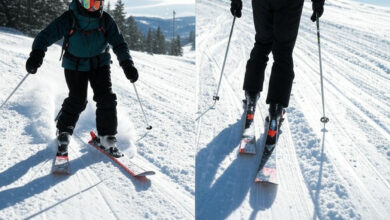
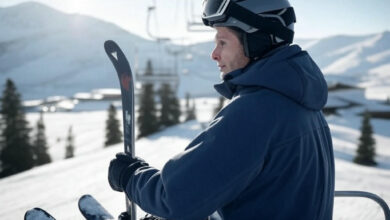
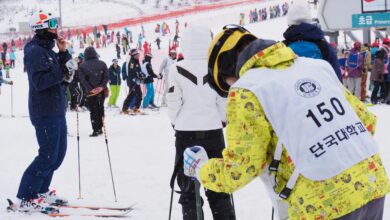
[…] How is Ski Jumping Scored? (Not Distance!) […]